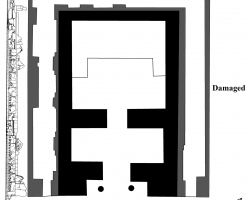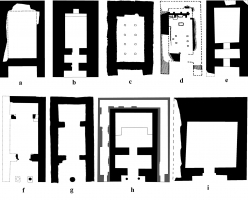Orientalizing Architecture: Prinias, ‘Ain Dārā and Hittite Echoes in Greek Architectural Sculpture
Serdar Yalçın
Recent research on Aegean-Near Eastern relations during the so-called Orientalizing period has substantially improved our understanding of the dynamics governing cultural interactions in the ancient eastern Mediterranean. A number of studies explore the exchange of artistic forms, motifs, and technologies that are particularly apparent in small portable objects. This paper addresses possible Near Eastern influences on the emergence of sculpted orthostats in the Aegean as a form of architectural decoration in the seventh century BC, an underexplored aspect of the ‘Orientalizing’ phenomenon. It will suggest that certain Neo-Hittite monumental buildings in North Syria, particularly the temple of ‘Ain Dārā, likely inspired the builders in the Aegean not only with their ante-style design but also with their extensive sculptural decorations on building façades. This Neo-Hittite impact on the design and decoration of early cult buildings in Greece is most visible in Temple A at Prinias in Crete, but also discernable in the Orientalizing period temples at Gortyn, Khania and Kalapodi. In this context, a re-evaluation of the archaeological, art historical, and textual material from the Aegean, Anatolia, and Syria shows how the Neo-Hittite buildings of the Iron Age functioned as an intermediary connecting certain cultic structures in the Aegean with the Hittite world of the Late Bronze Age.
Serdar Yalçın is Assistant Professor of Art History at Department of Art and Art History, Macalester College, St. Paul, Minnesota.

Yalçın S. 2020, Orientalizing Architecture: Prinias, ‘Ain Dārā and Hittite Echoes in Greek Architectural Sculpture, SMEA NS 6, 133-164.




















